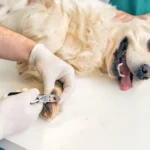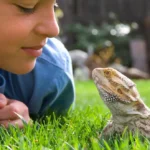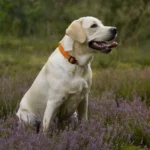Ever thought about beefing up your home security with a furry, four-legged friend? You’re not alone. In the USA, more and more families are turning to man’s best friend for an extra layer of protection. But we’re not talking about just any old watch dog here. We’re diving into the world of family protection dogs those special breeds that can go from cuddly companions to fearsome guardians in the blink of an eye.
So, grab a treat (for yourself, not the dog), and let’s explore the top breeds that’ll have intruders thinking twice about messing with your home sweet home.
What Makes a Dog a “Family Protection Dog”?
Before we unleash our list of the best family protection dogs, let’s bone up on what sets these pooches apart from your average family dog or watch dog.
A family protection dog is like the Swiss Army knife of the canine world. They’re not just alert barkers or intimidating figures. These dogs are the total package:
- Intelligent enough to assess threats
- Loyal to their family
- Gentle with kids (when properly trained)
- Physically capable of deterring or stopping an intruder
- Trainable for complex commands
Think of them as the canine equivalent of a loving nanny who also happens to be a black belt in karate. They’re cuddly, sure, but they’ve got the skills to pay the bills when it comes to keeping your family safe.
Top 10 Best Family Protection Dogs for American Homes
Now, let’s meet the crème de la crème of canine protectors. These breeds are the best of the best when it comes to combining family-friendly personalities with serious protective instincts.
1. German Shepherd: The Jack of All Trades
When it comes to best protection dogs, German Shepherds are like the James Bond of the dog world – suave, intelligent, and ready for action. These dogs consistently top lists of the most loyal and protective breeds, and for good reason.
Key Traits:
- Highly intelligent and trainable
- Naturally protective of their family
- Excellent with children when properly socialized
- Versatile – great at everything from police work to therapy
German Shepherds are the whole package. They’re as comfortable cuddling on the couch as they are chasing down bad guys. No wonder they’re often considered the best dog for family protection.
2. Rottweiler: The Gentle Giant with a Fierce Reputation
Don’t let their tough-guy image fool you. Rottweilers are big softies at heart – but only with their family. To everyone else, they’re an intimidating presence that screams “think twice before you try anything funny.”
Key Traits:
- Naturally protective without being aggressive
- Calm and confident
- Excellent with children when properly trained
- Intimidating size and appearance
Rottweilers are like that big, tough-looking bouncer who’s actually a teddy bear once you get to know him. They’re perfect for families who want a dog that’s both a cuddly companion and a formidable protector.
3. Doberman Pinscher: Sleek, Smart, and Seriously Protective
If German Shepherds are James Bond, Dobermans are more like Jason Bourne – sleek, agile, and always alert. These dogs are often considered one of the best dogs for women looking for protection, thanks to their loyalty and responsiveness.
Key Traits:
- Highly intelligent and easy to train
- Athletic and agile
- Fiercely loyal to their family
- Alert and responsive
Dobermans are the perfect blend of brains and brawn. They’re smart enough to know when there’s a real threat and brave enough to face it head-on.
4. Belgian Malinois: The Navy SEAL of the Dog World
If you’re looking for a dog that could probably file your taxes and then run a marathon, look no further than the Belgian Malinois. These dogs are the overachievers of the canine world.
Key Traits:
- Extremely intelligent and trainable
- High energy and endurance
- Excellent at detecting threats
- Devoted to their family
Belgian Malinois are like that friend who’s good at everything – it’s almost annoying how talented they are. But in this case, their talents are focused on keeping your family safe, so we’ll let it slide.
5. Bullmastiff: When Size Definitely Matters
Sometimes, the best defense is a good offense. And when it comes to offensive linemen in the dog world, Bullmastiffs are top draft picks. These gentle giants are like walking, barking security systems.
Key Traits:
- Massive size is a natural deterrent
- Calm and patient, especially with children
- Protective without being aggressive
- Low energy, suitable for less active families
Bullmastiffs are proof that you don’t have to be hyperactive to be an excellent guard dog. These dogs are content to lounge around all day, but they’ll spring into action at the first sign of a threat.
6. Boxer: The Clown Prince of Protection
Who says protection can’t be fun? Boxers are like the class clowns of the guard dog world – goofy and playful with their family, but all business when it comes to protecting them.
Key Traits:
- Energetic and playful
- Great with kids
- Naturally protective
- Athletic and strong
Boxers are perfect for families who want a dog that can keep up with active kids and still keep an eye out for potential threats. They’re like the cool uncle who’s always up for a game of catch but will also teach you how to change a tire.
7. Great Dane: Scooby-Doo’s Cousins Pack a Real Punch
Great Danes are living proof that sometimes, size really does matter. These gentle giants are like walking billboards that say “Protected by Really Big Dog, Inc.”
Key Traits:
- Enormous size is an instant deterrent
- Gentle and patient, especially with children
- Protective of their family
- Calm demeanor
Great Danes are perfect for families who want a dog that’s as much of a conversation piece as it is a protector. Plus, they double as excellent pillows for movie night.
8. Cane Corso: The Italian Stallion of Guard Dogs
Cane Corsos are like the strong, silent type of the dog world. They don’t bark much, but their presence alone is enough to make most intruders think twice.
Key Traits:
- Powerful and athletic
- Intensely loyal to their family
- Calm and steady temperament
- Excellent at assessing threats
These dogs are like having your own personal bodyguard – one that’s also great with kids and doesn’t expect to be paid in anything but kibble and belly rubs.
9. Akita: The Fluffy Samurai
Akitas are like the wise old sensei of the dog world – calm, dignified, and capable of kicking butt when necessary.
Key Traits:
- Naturally protective and territorial
- Loyal to their family
- Independent thinkers
- Powerful and imposing
Akitas are perfect for families who want a dog that’s as comfortable lounging regally by the fireplace as it is chasing off potential threats.
10. Giant Schnauzer: Big Dog Energy in a Dapper Package
Last but not least, we have the Giant Schnauzer – proof that you can be both dapper and dangerous.
Key Traits:
- Highly intelligent and trainable
- Energetic and playful
- Naturally protective
- Imposing size with a stylish look
Giant Schnauzers are like the James Bond of the dog world – sophisticated, intelligent, and capable of taking down the bad guys while barely messing up their coat.
Choosing Your Furry Bodyguard: Factors to Consider
Now that you’ve met the contestants in our “America’s Next Top Guard Dog” competition, how do you choose the right one for your family? Here are some factors to consider:
- Size Matters: Make sure your home can accommodate your chosen breed. A Great Dane in a studio apartment is like trying to park a bus in a compact spot.
- Energy Levels: Can you keep up with a high-energy breed like a Belgian Malinois, or would you prefer a more laid-back protector like a Bullmastiff?
- Training Needs: Are you ready to commit to the intensive training some of these breeds require? Remember, a well-trained protection dog is a safe protection dog.
- Climate Considerations: Some breeds, like Akitas, thrive in cold weather, while others, like Boxers, do better in warmer climates.
- Family Dynamics: Consider your family’s lifestyle. Do you have young children? Other pets? Some breeds are better suited to certain family situations than others.
Here’s a handy table to help you compare:
| Breed | Size | Energy Level | Training Needs | Good with Kids | Cold Weather | Warm Weather |
|---|---|---|---|---|---|---|
| German Shepherd | Large | High | High | Excellent | Good | Good |
| Rottweiler | Large | Moderate | Moderate | Good | Good | Fair |
| Doberman Pinscher | Large | High | High | Good | Fair | Good |
| Belgian Malinois | Medium | Very High | Very High | Good | Good | Good |
| Bullmastiff | Large | Low | Moderate | Excellent | Fair | Fair |
| Boxer | Medium | High | Moderate | Excellent | Poor | Good |
| Great Dane | Giant | Moderate | Moderate | Excellent | Fair | Fair |
| Cane Corso | Large | Moderate | High | Good | Fair | Good |
| Akita | Large | Moderate | High | Fair | Excellent | Fair |
| Giant Schnauzer | Large | High | High | Good | Good | Good |
Training Your Family Protection Dog: From Puppy to Protector
So, you’ve chosen your canine champion. Now what? Training is crucial for any dog, but for family protection dogs, it’s like the difference between a butter knife and a Swiss Army knife – same basic concept, wildly different capabilities.
The Basics: It’s Not Just “Sit” and “Stay” Anymore
Basic obedience is the foundation of any good dog training, but for protection dogs, we’re talking about graduate-level stuff. Your dog needs to master:
- Advanced obedience commands
- Threat assessment
- Controlled aggression
- Stand-down commands
Remember, a protection dog without proper training is like a loaded gun without a safety – dangerous and unpredictable.
Socialization: Creating a Dog of the World
Your protection dog needs to be comfortable in various situations and around different people. This helps them distinguish between normal situations and genuine threats. Expose your dog to:
- Different environments (urban, rural, etc.)
- Various types of people (different ages, races, etc.)
- Other animals
- Unusual sounds and sights
Advanced Training: When to Call in the Pros
While you can handle basic training, advanced protection training should be left to the professionals. Look for trainers who specialize in protection dogs and have verifiable credentials.
Ongoing Education: Keeping Skills Sharp
Training isn’t a one-and-done deal. Regular practice and ongoing training are crucial to maintain your dog’s skills. Think of it like going to the gym – you can’t do a few push-ups and expect to be buff forever.
The Legal Lowdown on Owning a Protection Dog in the USA
Owning a family protection dog isn’t just about choosing the right breed and training them well. There’s also a legal side to consider. After all, your furry protector is also a potential liability.
Understanding Liability: With Great Power Comes Great Responsibility
In the eyes of the law, your protection dog is like a four-legged weapon. If your dog injures someone, even an intruder, you could be held liable. Some key points to remember:
- You’re responsible for your dog’s actions, even if they were protecting you or your property.
- If your dog has a history of aggression, your liability risk increases.
- Some homeowner’s insurance policies exclude certain breeds or require additional coverage for protection dogs.
Insurance Considerations: Better Safe Than Sorry
Speaking of insurance, it’s a good idea to:
- Check if your current homeowner’s policy covers your protection dog.
- Consider additional liability insurance specifically for dog owners.
- Keep detailed records of your dog’s training and behavior.
Breed-Specific Legislation: Knowing Your Local Laws
Some areas have laws restricting or banning certain breeds. Before you bring home your new furry bodyguard, check your local laws. Some breeds commonly affected by these laws include:
- Pit Bulls
- Rottweilers
- Doberman Pinschers
- German Shepherds
Remember, these laws can vary not just by state, but by city or even neighborhood.
Real-Life Heroes: Tales of Family Protection Dogs in Action
Now, let’s get inspired by some real-life canine heroes. These stories show just how valuable a well-trained family protection dog can be.
Case Study: Rex the Hero Rottweiler
In 2018, a 16-year-old boy in Washington state was home alone when intruders broke in. The family’s Rottweiler, Rex, sprang into action. He attacked the intruders, giving the boy time to hide. Rex was shot three times but survived and made a full recovery. The intruders were later caught, thanks in part to Rex’s brave actions.
The Cancer-Detecting German Shepherd
In 2016, a woman in California credited her German Shepherd, Sierra, with detecting her lung cancer before any medical tests could. Sierra kept pawing at her owner’s chest and acting distressed. When the owner went to the doctor, early-stage lung cancer was discovered. Thanks to the early detection, the cancer was treated successfully.
These stories highlight the incredible bond between humans and their protection dogs. As one owner put it, “They’re not just pets, they’re family members who would lay down their lives for us.”
Beyond the Bark: Integrating Your Protection Dog into Family Life
Remember, your family protection dog isn’t just a security system with a wagging tail. They’re a full-fledged family member. Here’s how to ensure they’re happy, healthy, and ready to protect:
- Balanced Environment: Your dog needs time to just be a dog. Regular play, cuddles, and downtime are crucial.
- Exercise: A tired dog is a good dog. Regular exercise helps manage energy levels and keeps your dog physically and mentally fit.
- Health Care: Regular vet check-ups, a good diet, and preventative care are essential. Remember, a sick dog can’t protect anyone.
- Family Bonding: Involve the whole family in care and training. This strengthens the bond between the dog and all family members.
The Cost of Security: Budgeting for Your Canine Protector
Let’s talk dollars and cents. Owning a family protection dog isn’t cheap, but can you really put a price on peace of mind? Here’s a breakdown of potential costs:
- Initial Costs:
- Purebred puppy from a reputable breeder: $1,500 – $5,000+
- Initial medical care (vaccinations, spay/neuter): $200 – $500
- Basic supplies (bed, crate, leash, etc.): $200 – $500
- Training Costs:
- Basic obedience classes: $50 – $200 per course
- Professional protection training: $5,000 – $20,000+
- Ongoing Costs:
- Food: $50 – $100+ per month
- Regular vet care: $200 – $500+ per year
- Toys and treats: $20 – $50+ per month
- Continued training: $500 – $1,000+ per year
Remember, these are rough estimates. Costs can vary widely depending on your location, the specific breed, and the level of training.
Alternatives and Complements to Family Protection Dogs
While family protection dogs are awesome, they’re not the only way to keep your home safe. Here are some alternatives and complementary options:
- High-Tech Home Security Systems: These can include cameras, motion sensors, and 24/7 monitoring.
- Community Watch Programs: Getting to know your neighbors and looking out for each other can be a powerful deterrent to crime.
- Personal Safety Training: Self-defense classes can help you feel more secure and prepared.
- Smart Home Devices: Things like smart locks and video doorbells can add an extra layer of security.
Remember, the best security strategy often involves multiple layers of protection. Your family protection dog can be a key part of a comprehensive home security plan.
Conclusion: Finding Your Perfect Furry Guardian
Choosing the best family protection dog is a big decision, but it can be an incredibly rewarding one. Whether you go for the intelligence of a German Shepherd, the strength of a Rottweiler, or the goofball charm of a Boxer,
FAQs About Family Protection Dogs
- How much does a family protection dog cost?
Prices can range from $3,000 to $50,000 or more, depending on the breed and level of training. - Can protection dogs be good with children?
Yes, many protection dog breeds are excellent with children when properly trained and socialized. - How long does it take to train a family protection dog?
Basic obedience can take 4-6 months, while full protection training can take a year or more. - Are certain breeds better suited for apartment living?
Yes, breeds like Boxers and Doberman Pinschers can adapt well to apartment living with proper exercise. - Can I train my current dog to be a protection dog?
While possible, it’s generally more effective to start with a breed naturally inclined towards protection work.

















